Very few creators from the Golden Age of comics got any real recognition for their work. It took Siegel and Shuster a lifetime to get recognised for Superman and even though Bob Kane was credited as being the creator of Batman, his co-creator, Bill Finger never got the credit, or the remuneration he deserved, in his lifetime.
Most comic creators, prior to the Silver Age, were content to work in relative obscurity, glad to get a paycheck for doing something they enjoyed. When the Kefauver Senate Committee on Juvenile Delinquency hit US TV screens in 1954 and painted comics as the cause of all juvenile crime, those creators who managed to keep their jobs were thankful they’d remained anonymous. Some artists, like horror maven ‘Ghastly’ Graham Ingels, disavowed their comic work altogether.
This makes it difficult, for those who care about such things, to keep track of the careers of comic creators before the 1960s, and to identify who drew or wrote which story. This was never more the case than when I stumbled on a seventy year old set of engraver’s proofs, among the collection of a late friend.
His family have asked me to withhold his name, so I’m going to call him Rex. He was a wildlife painter, from New Zealand, whose paintings were much sought after by collectors. He was a reclusive figure and I was introduced through his late wife, a children’s author. Rex and I bonded over our shared love of comics. He had a big house, in the Wiltshire town where I live, and his whole four room attic was filled with comics from the golden age to the present day.
When he passed recently, I was asked by his family to help them sell off his huge collection, which was more valuable than any of us realised. In return for getting them a good price for the comics, the family let me choose a few pieces for myself. That’s when I came across the unpublished engraver’s proofs.
Engraver’s proofs were unbound and uncut pages that printers would run off to allow an editor to check the work before a full run was commissioned. The pages I found appeared to be from Weird Chills #4, from 1954 and pages of what may be issue 6 of Stanley Publication’s reprint mag Chilling, from 1971. Neither of which, to the best of my knowledge, were ever published. I’ve checked the Grand Comics Database and other online resources and I can’t find any Weird Chills #4 or Chilling #6.
Publisher Stanley Morse, who put out Weird Chills, ran a bit of a fly-by-night operation. He often moved offices, changed printers and put out comics under a variety of imprints, including Key Publications, Gilmor, Medal Comics and others. Chilling was a publication from the early 70s, when companies like Eerie Publications, run by Myron Fass, often reprinted old pre-code stories as black and white magazines, to get around the Comics Code Authority. This seems to be published by an off shoot company of Eerie Publications, run by his erstwhile partner Stanley Harris.
My excitement about finding two entirely new, unpublished horror comics quickly abated when I found that all the stories were reprints from previous comics, except for three originals. These stories were drawn by an artist called R. L. Carver and, as he’s credited as the writer of one, he may have written all them. Though I’ve no way of proving that.
Despite a lot of effort, on the part of people much better at research than I am, I’ve uncovered hardly any info on the artist signing themselves R. L. Carver. From Census records, we know that a Carver family moved from Louisiana to New York in the late 30s. This may have been when Carver was a child. An artist with the surname ‘Carver’ is listed on the payroll of the Sonnenfeld studios, who, in the late forties, were the Iger studios’ biggest rival in the comics packaging business. No payments are made to Carver after 1952, whether this meant he went freelance or dropped out of comics altogether, I don’t know. But two of the stories I found date to around 1954, so it’s doubtful.
After that, the trail goes cold. As the last story dates to around 1971, it’s unlikely that Carver left the business completely. There’s some speculation as to whether the Fetish artist who signed himself ‘Ireg’ was actually Carver. This artist produced work similar to Eric Stanton, Steve Ditko’s old studio mate. And, like Stanton, Ireg’s work was sold on subscription from a Times Square bookstore. I can’t conclusively confirm or deny any connection between Ireg and Carver though.
All of which is a great shame, as the stories I found are quite unique, in the mould of outsider artists like Basil Wolverton and Fletcher Hanks. As Rex is no longer around to answer any of my questions, I wonder what he knew about R. L. Carver. Was there a connections between the two artists? I’ll probably never know.
I can’t help wondering what R. L. Carver was like as a person. What their hopes, dreams and ambitions were. Did they love comics or was this just a job to them?
About ten years ago, with the help of my friend Mike Howlett, author of The Weird World of Eerie Publications, I wrote an article for This Is Horror about Bill Alexander, another artist who’d been lost in the mists of time. As a result, his widow reached out to me on social media. So I contacted Down the Tubes, to share this story, and to post one of the comic stories I found, in the hopes that one of Carver’s surviving relatives, or an old friend, might step forward with more information.
I also want to share the work of this unrecognised creator with a wider audience, because I think it warrants another look. If you have any info about R. L. Carver, or know anything about these stories, such as if they were printed elsewhere, either in the US or abroad, I’d love to hear from you.
Here then, is one of the stories attributed to R. L. Carver, it’s called Sign of the Crimes, and it’s a strange little story, to be sure, somewhat in the vein of Heinrich Hoffman’s Struwwelpeter.
Enjoy!
Jasper Bark
You can contact Jasper via jasperATjasperbark.net
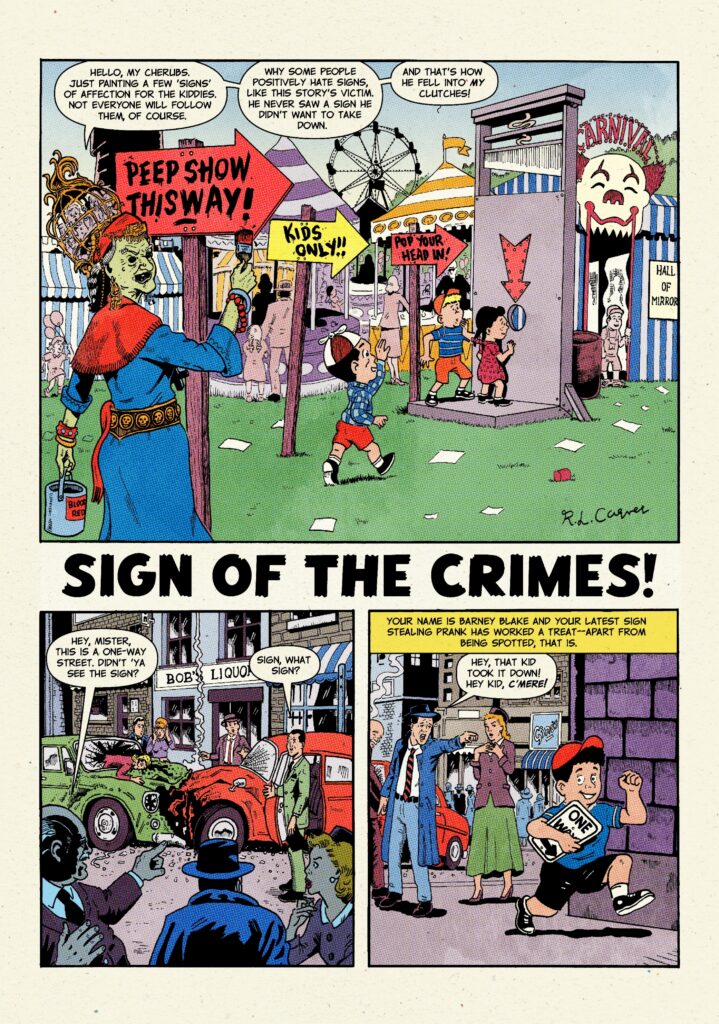
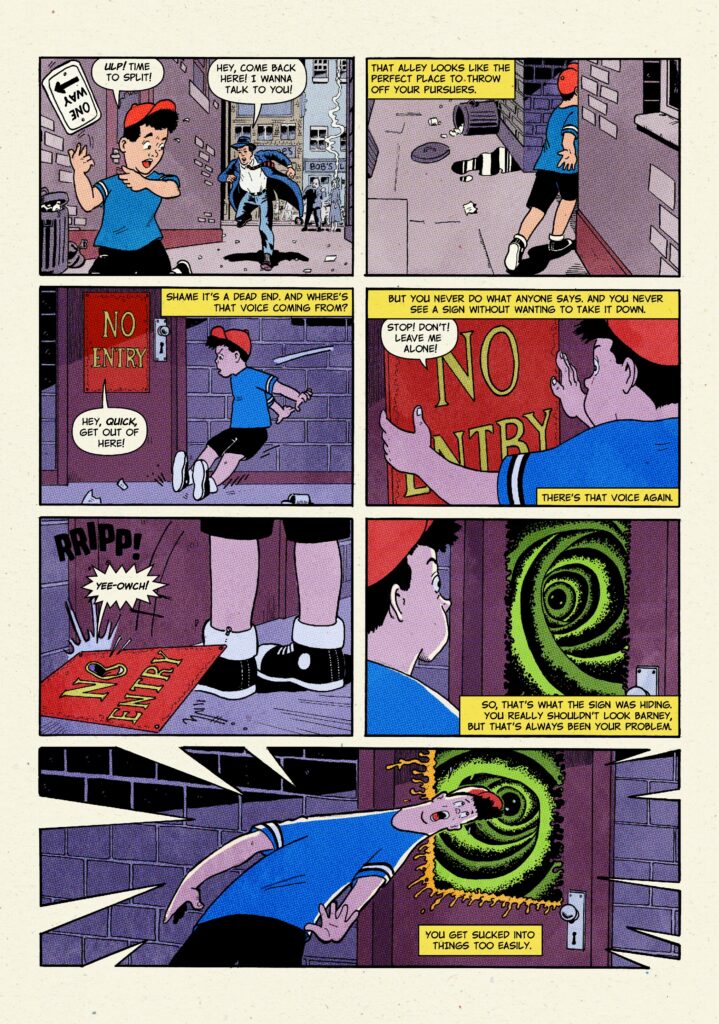
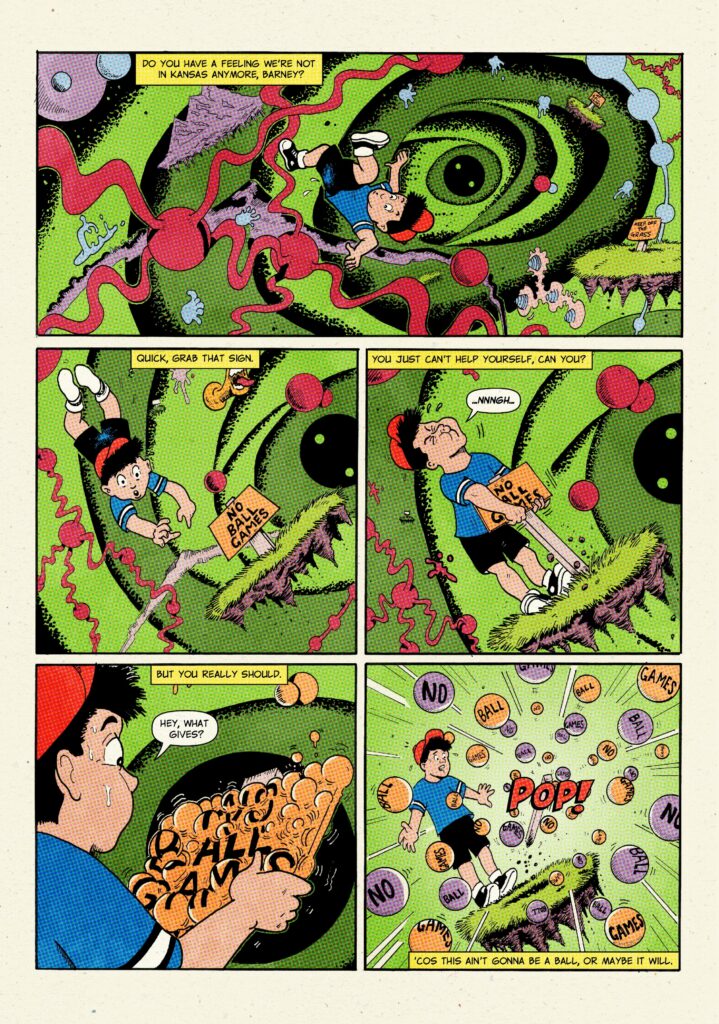
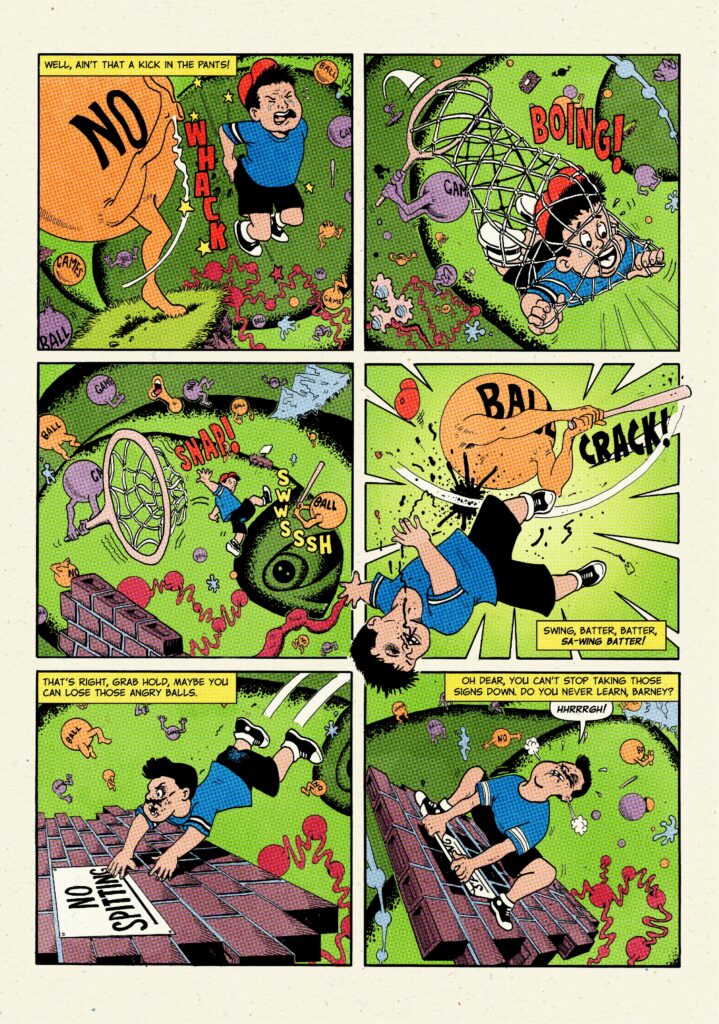

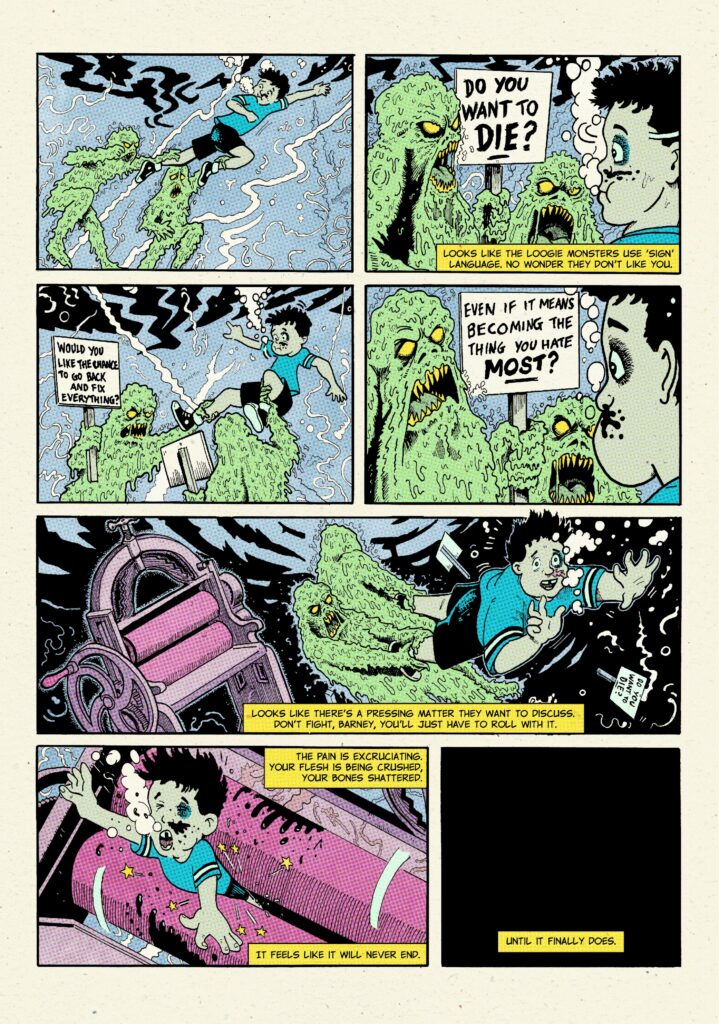

Jasper Bark finds writing biographies, and talking about himself in the third person, faintly embarrassing. Telling you he’s won a This Is Horror Award, A Splatterpunk Award and been nominated for a British Fantasy Award and a Bram Stoker Award just sounds like boasting.

As does the fact that he’s written ten novels including the critically acclaimed Draw You In trilogy, eight novellas and two collections of short stories. Then he has to mention the huge number of comics and graphic novels he’s written for European and American markets, such as Beyond Lovecraft and Bloodfellas, and he just wants to curl up and die. Especially as he won an Educational Readers’ Award for his Battle Cries series and was nominated for an Eagle Award.
He’s awfully uncomfortable discussing his previous careers as a national film and music journalist, a cable TV presenter and a Fringe First Award winning stand up. Maybe he’s too British, or maybe he just needs a good enema, but he’s glad this bio is now over.
• Follow Jasper on Facebook | Instagram | X
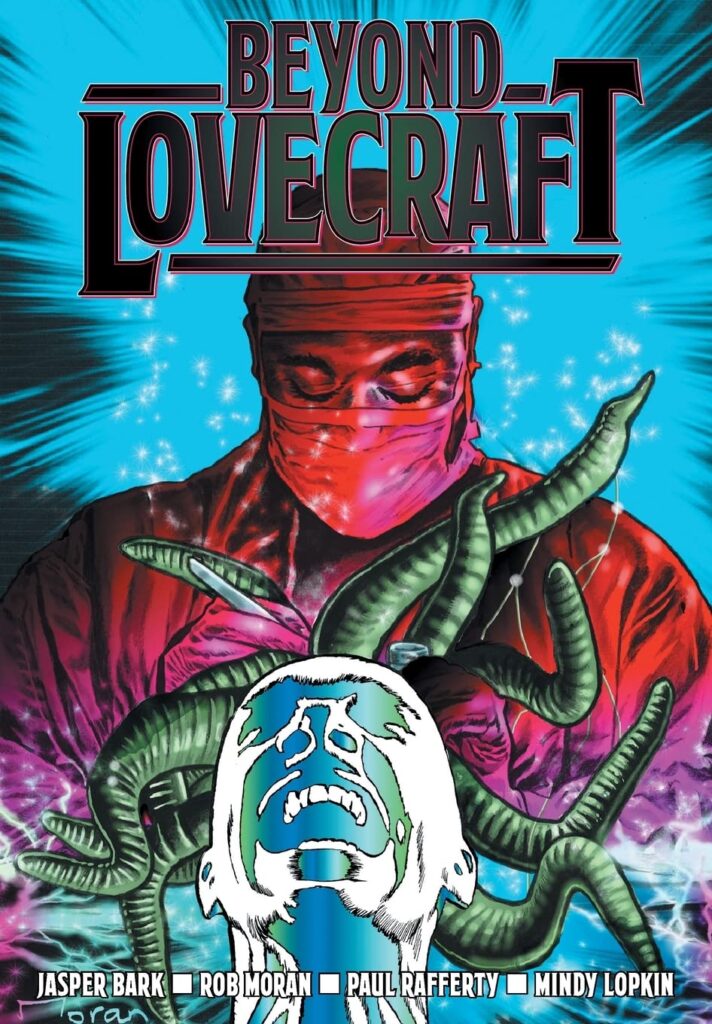
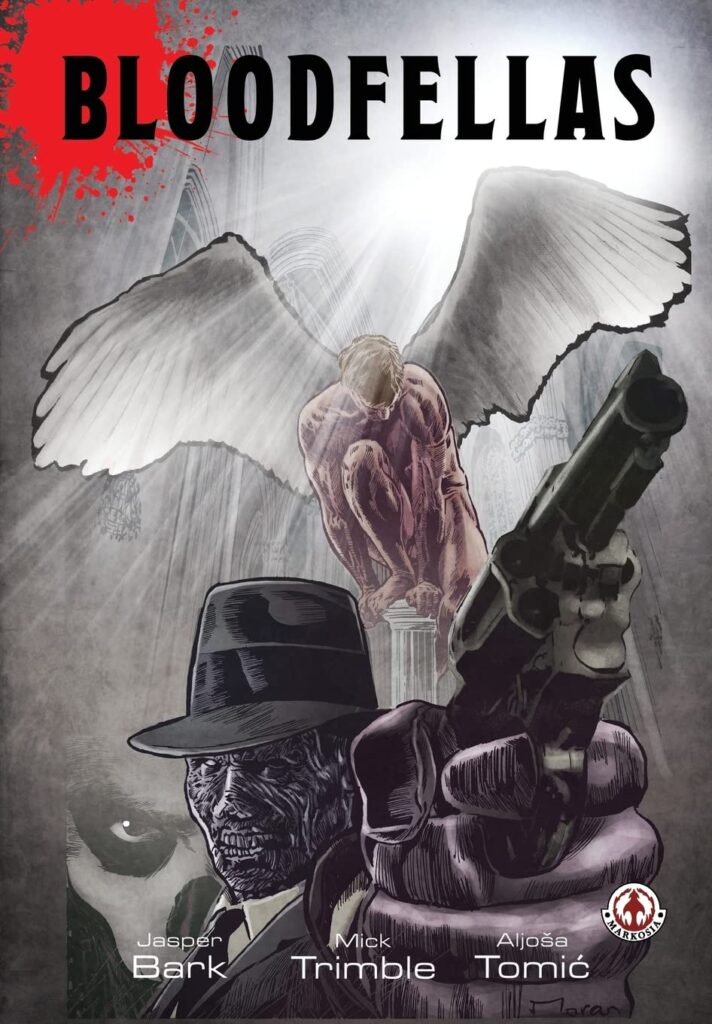
Beyond Lovecraft (available here, AmazonUK Affiliate Link) is an anthology featuring three tales of cosmic horror that explore the secret history of the Cthulhu mythos, and the terrible truths to be found when we stray outside the bounds of everyday reality.
The Elder Gods have risen and reclaimed the Earth. In the apocalypse that follows a tiny band of human survivors find a way to access the fabled library of the Yith, an alien archive containing the history of the entire universe. As they search for a way to vanquish their conquerors they uncover untold tales and make a revelation so disturbing it challenges their whole existence…
“When there’s no room left in hell, the dead will turn to crime.” In Bloodfellas (available here, AmazonUK Affiliate Link), Boardwalk Empire meets The Walking Dead. Zombie Gangsters take over the streets of Prohibition era USA. A horror-crime mash up available from Markosia…
• Follow Jasper on Facebook | Instagram | X
One of many guest posts for downthetubes.
Categories: Comics, Creating Comics, downthetubes News, Features, US Comics
 Exclusive: Creating Comics – Chris Weston talks “Time Breakers” and “Paranoid Gardens”
Exclusive: Creating Comics – Chris Weston talks “Time Breakers” and “Paranoid Gardens”  In Review: illustrators Issue 42 headlines with Richard Corben retrospective
In Review: illustrators Issue 42 headlines with Richard Corben retrospective  Piston Pumping! Rob Williams and Pye Parr’s Petrol Head – Exclusive Interview
Piston Pumping! Rob Williams and Pye Parr’s Petrol Head – Exclusive Interview  In Review and in Pictures: KAPOW – the exhibition – The Art of Making Comics and Films
In Review and in Pictures: KAPOW – the exhibition – The Art of Making Comics and Films
Looks like a modern comic trying to look like a 50s/60s book – lettering looks digital and the colours are too good! Among other stylistic things.
I immediately thought the same thing as Daniel Rachael even before reading it, the lettering looks digital and the colours are modern trying to look like Ben-Day printing.
It’s also very lightly written for a 50s/60s story, those captions are far too brief for the style of the era. This kind of story that was told in 3 pages back then, not 7.
I’d guess it’s some fakery. Be interesting to hear what happens next.
Who knows what time zone Jasper is from, eh? June 2024, would be my guess… 🙂
Very enjoyable story, even if I’m not entirely convinced it wasn’t actually drawn recently, as a late April Fool’s gag. One error I noted. You said Chilling #6 didn’t exist, but Chilling had 11 issues, including issue #6. However there was no Weird Chills #4, (from 1954) as you stated correctly, as it ceased publication with issue #3.
Late April fools?